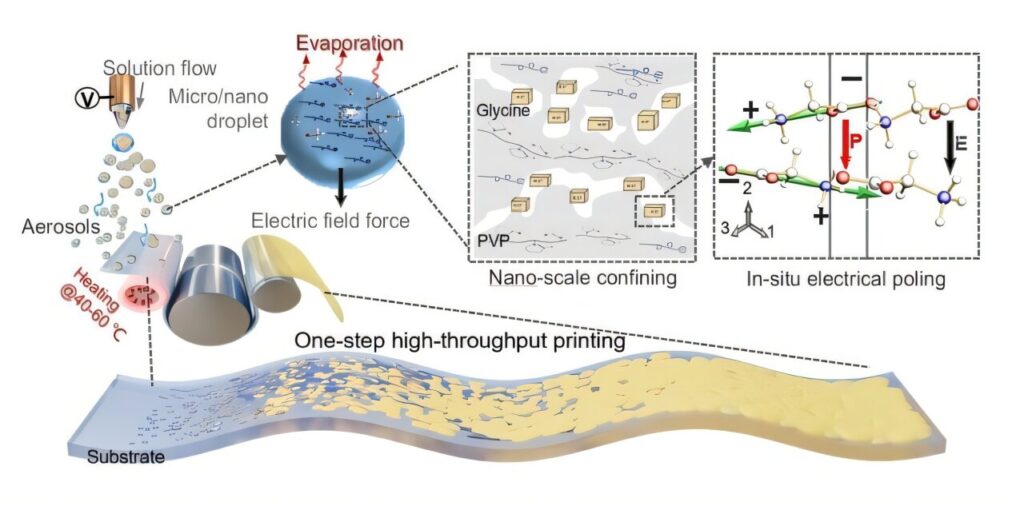Amidst the ongoing surge in demand for bio-MEMS, wearable/implantable electronics and bio-tissue therapeutics, the pursuit of piezoelectric biomaterials has become a priority, thanks to their remarkable electromechanical properties, biocompatibility, and bioresorbability.
However, their technological potential is restrained by the challenges of precise manipulation of nano-biomolecules, controlling their growth across the nano-to-macro hierarchy, and tuning desirable mechanical properties.
Since the discovery of biological piezoelectricity in wool and hair in 1941, attempts to activate piezoelectricity in biomaterials through external electrical poling have proven largely unsuccessful. For 80 years, the challenge has remained unaddressed, forming a huge gap between laboratory piezoelectric biomaterials and practical bio-devices.
Our research team led by The Hong Kong University of Science and Technology (HKUST) has developed a breakthrough technology that utilizes thermal-electrically triggered aerosols to fabricate flexible piezoelectric biofilms. The work is published in the journal Science Advances.
The developed thermal-electric aerosol (TEA) printer is capable of one-step, high-speed, and roll-to-roll printing of piezoelectric biofilms for the production of miniaturized/flexible bioelectronics, wearable/implantable micro-devices and bio-tissue therapeutics, offering the possibility of industrial manufacturing of piezoelectric biofilms.
The combination of top-down design freedom offered by additive manufacturing and bottom-up control over nano-biomolecules showcases the feasibility and boundless prospects of bridging the gap between laboratory piezoelectric biomaterials and practical bio-devices.
Traditional biomolecular assembly methods often require extensive self-aligning time (from ~0.5 h to ~48 h), which not only brings difficulties for high-speed manufacturing, but also leads to undesired structural defects.
By contrast, the TEA printer, using electrohydrodynamic aerosolizing and in-situ electrical poling, allows for ~8,600 mm printing length per day, two orders of magnitude faster than the existing techniques.

The glycine/polyvinylpyrrolidone films we produced demonstrate the piezoelectric voltage coefficient of 190 × 10−3 volt-meters per newton, surpassing that of widely used industry-standard lead zirconate titanate by approximately 10-fold. Furthermore, these films demonstrate nearly two orders of magnitude improvement in mechanical flexibility compared to glycine crystals.
Our TEA printer shows printing capability for wide-ranging classes of biomaterials such as glycine, chitosan, and poly(L-lactic acid). The next phase of research will focus on leveraging the TEA printing and piezoelectric biomaterial libraries, as well as machine-learning-guided design strategies to accelerate the development of a broad range of piezoelectric biomaterials for flexible bioelectronics and bio-tissues therapeutics.
This story is part of Science X Dialog, where researchers can report findings from their published research articles. Visit this page for information about Science X Dialog and how to participate.


